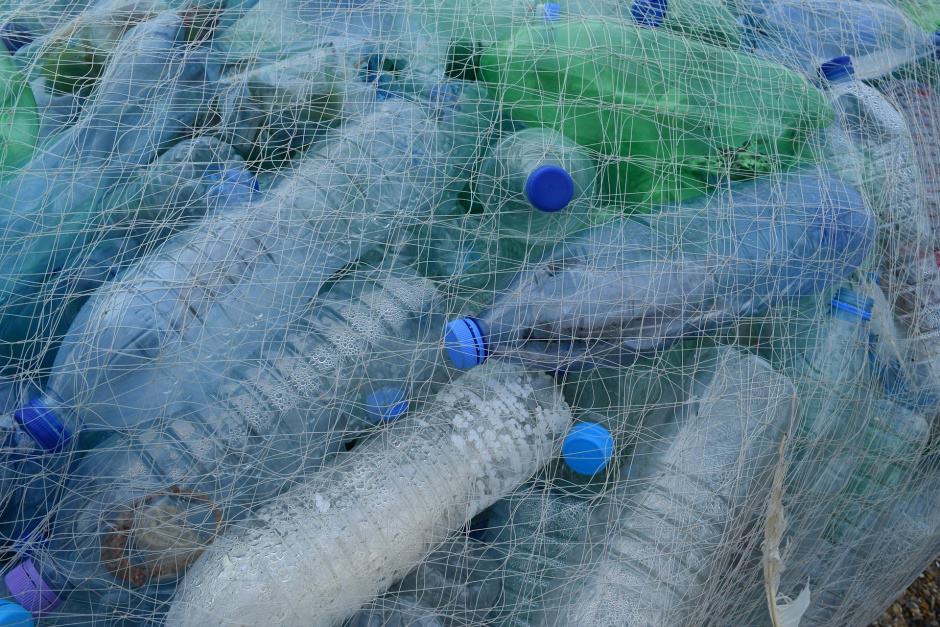 The war on plastic waste is arguably one of the biggest environmental battles of the 21st century. Here, Simona Maccarrone, materials scientist at online materials database Matmatch, explains what new solutions suppliers are adopting to increase sustainability in the plastics market.
The war on plastic waste is arguably one of the biggest environmental battles of the 21st century. Here, Simona Maccarrone, materials scientist at online materials database Matmatch, explains what new solutions suppliers are adopting to increase sustainability in the plastics market.
While delivering many benefits, plastics still have critical drawbacks. After a short first-use cycle, 95 per cent of plastic packaging material of an estimated value between 80 and 120 billion USD annually, is lost to the economy.

One third of plastic packaging escapes collection systems, generating significant economic costs by reducing the productivity of vital natural systems such as the ocean and clogging urban infrastructure. The cost associated with greenhouse gas emissions from its production, which is estimated at $40 billion USD annually, should also be considered.
Earlier this year, toymaker LEGO announced that its first line of sustainable bricks (made from sugarcane-derived polyethylene) will hit the shelves in 2018. The LEGO group joined the Bioplastic Feedstock Alliance (BFA) in 2016, an organisation that works with manufacturers, such as the Coca-Cola Company, Danone, Nestle, P&G, Unilever to name just a few, to responsibly source bioplastics.
As stated in the BFA white paper, "supporting a system of continuous improvement for biomass production, we can build healthier, more resilient ecosystems that provide improved ecosystem services to local communities and better protection from a changing climate – while still providing the materials our global economy needs to function and maintaining food security".
The growing popularity of bioplastics and biomaterials represent a unique opportunity to reduce the impacts of our dependence on fossil resources and contribute to the reduction of CO2 emissions responsible for global warming. Realising the benefits of responsible sourcing will also make our farm land and ecosystems more resilient.
So, how is the industry reinventing itself? Besides well established sources of bioplastics like starch, we are seeing a growing interest in new materials that can be used to create bioplastics.
Some use hemp waste to create new biocomposites suitable for 3D printing and a wide array of industrial and personal applications, while others use coffee or even beer leftovers to create special 3D printing materials with visibly unique print finishes. In another example, 16-year old student Elif Bilgin, from Istanbul (Turkey) won Google’s 2013 science fair by developing a bioplastic from banana peels.
The fashion industry is also becoming sustainable. Salvatore Ferragamo, one of the biggest names in Italian fashion, created a collection that uses a sustainable fabric from citrus juice byproducts. Those fabrics are formed from a silk-like cellulose yarn that can be blended with other materials featuring a soft and silky hand-feel.
Switching to bioplastics means to apply bioeconomy – an economy where goods are made from responsibly produced biomass – to rethink the future of plastics. The bioeconomy is an essential component of the circular economy, as it provides the resource base for a vast amount of economic activities. In the circular economy, material flows are captured and reused, and biological flows are designed to re-enter and replenish nature safely.
A recent report by McKinsey, the Ellen MacArthur Foundation, and the World Economic Forum - The New Plastics Economy: Rethinking the future of plastics - finds that applying circular-economy principles could dramatically reshape the economics of plastics on a global scale and help the environment.
Here at Matmatch we also want to support a sustainable future by providing design engineers access to materials information that helps them consider the environmental impact of plastic earlier in the design process. We also want to give innovative plastics suppliers a new way to reach those customers willing to employ their environment-friendly materials.
To source the right material for your project, or to learn more about any of the 200+ polymers listed on the site, visit Matmatch’s online materials database










Pipebots Transforming Water Pipe Leak Detection and Repair
Fantastic application.